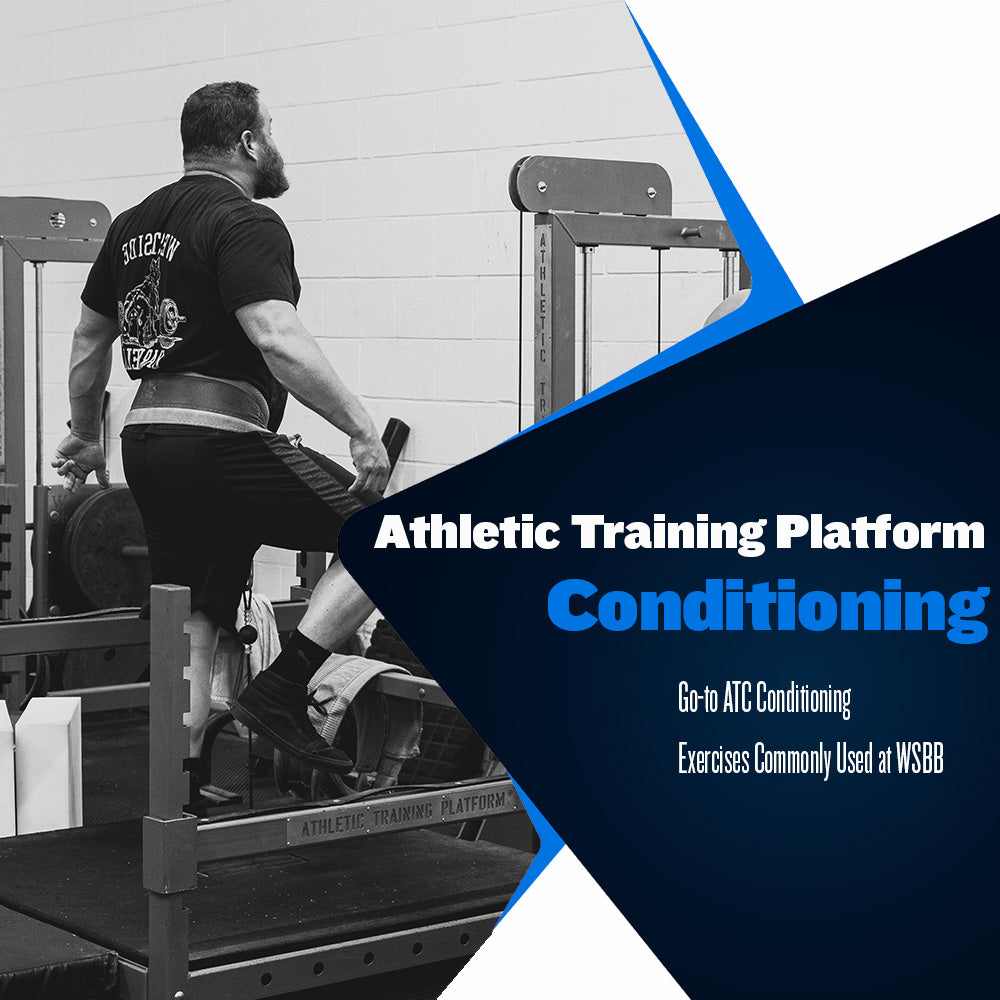Athletic Training Platform Conditioning

As an athlete, one of the most beneficial traits you can improve is your conditioning. While this may seem obvious, many athletes train their conditioning to meet the baseline demands of their sport, leaving much room for improvement.
The correct approach would be for an athlete to always seek to improve conditioning levels, given this trait is one of the easiest to improve both in and out of season. When in season, many athletes are limited regarding their strength training options. However, given the generally low impact conditioning work has on recovery, we can execute this work year-round.
Why should an athlete seek to improve their conditioning constantly? A high level of conditioning allows athletes to display strengths they possess more consistently due to increased oxygen transport in the body. Additionally, as GPP/conditioning increases, the athlete will find returning to a strength-focused training program is more manageable.
At Westside, one of our primary ways of conditioning our athletes is via the Athletic Training Platform. The ATC is a belt squat training device with a large platform to allow an athlete to move in any direction. The cable is in the center of the platform, providing different training effects depending on the exercise you perform and where you place your feet.
Here are a few exercises we perform on the Westside Barbell ATC to improve the conditioning levels of athletes:
Belt Squat Walks
This is the primary exercise our athletes will perform when using the ATC for conditioning work. The reason belt squat walks are a good option for exercise selection is because they can be performed often. To an athlete, the recovery demand associated with belt squat walks should be easy to manage.
Belt squat walks are similar to sled pulls, except the tension is constant. Similar to sled pulls, we can move forward, backward, or walk side to side, focusing on lateral drive. If you want to increase the difficulty, you can add an object to carry like a kettlebell, medicine ball, or a safety squat barbell to force proper posture and trunk engagement.
This exercise can be performed regularly, practically every training day. However, we recommend alternating between belt squat walks and sled pulls. When programming this exercise, start with four to six sets of two minutes each. As conditioning improves, seek to add more sets and then more time.
AMRAP Belt Squats
An excellent way for powerlifters, strongman competitors, CrossFit competitors, or athletes to get in shape is using AMRAP belt squats. As the name implies, you will perform belt squat reps for as many as you can each set. The goal is to complete the least amount of reps on your last set, confirming you are adequately exhausted.
The benefits are apparent; you will strengthen your trunk and legs while significantly raising your conditioning levels. Additionally, this is an excellent way for powerlifters and strongman competitors to improve their lower body muscular endurance without carrying a barbell on their back.
Given the fact this exercise can be very demanding, we will typically perform AMRAP belt squats once per week. If you are an athlete with a high conditioning level, you can opt to perform this exercise two times per week.
Belt Squat Thrusters
Another brutal exercise, belt squat thrusters, will improve cardiovascular conditioning and overall muscular endurance. The idea is simple; you will perform thrusters with a barbell, kettlebell, or a medicine ball while hooked up to the ATC.
Depending on the weight used, we will perform this exercise for sets of five, eight, ten, or AMRAP. Heavy sets of five can greatly increase the muscular endurance needed for powerlifters or strongman competitors. In contrast, the higher rep sets will give CrossFit competitors and athletes the necessary conditioning work to compete in their sport.
Typically, we will perform this exercise with a box. This adds a relaxed overcome by dynamic and static overcome by dynamic training effect that is incredibly beneficial when building explosive strength and athleticism. You can perform this exercise up to two times per week.
For more information on training athletes for specific sports, visit the Westside Barbell website.




